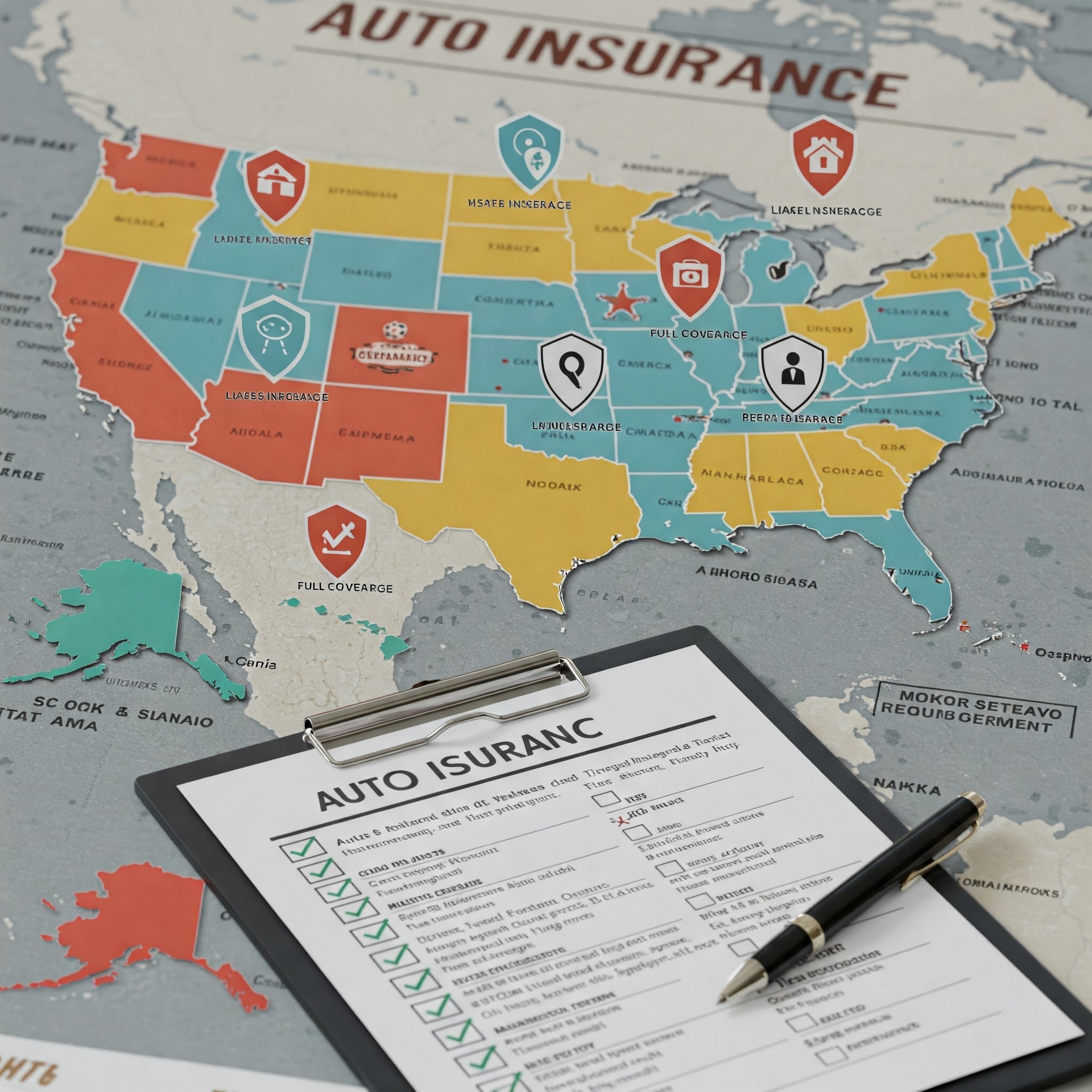State-Specific Auto Insurance Requirements: A Comprehensive Guide
Introduction
Did you know that auto insurance laws vary from state to state? What’s required in California may not be the same in Texas or New York. Understanding these differences can help you stay compliant with the law and make sure you’re adequately covered.
If you’re wondering how state-specific auto insurance requirements impact you, this guide is here to help. We’ll break down the essentials, from minimum coverage limits to optional add-ons and penalties for not having insurance.
Understanding Auto Insurance Requirements
What Are State-Specific Auto Insurance Requirements?
Each state in the U.S. has its own set of rules regarding the minimum amount of insurance coverage a driver must carry. These laws exist to protect drivers, passengers, and property in case of an accident.
Why Do These Requirements Vary?
State laws consider factors like population density, road conditions, accident rates, and local economic conditions. Some states require only liability insurance, while others mandate additional coverage like uninsured motorist protection or personal injury protection (PIP).
Real-World Examples
- California: Requires a minimum of 15/30/5 liability coverage ($15,000 for bodily injury per person, $30,000 per accident, and $5,000 for property damage).
- Florida: Uses a no-fault system and requires Personal Injury Protection (PIP) coverage.
- Texas: Has a minimum liability requirement of 30/60/25.
- New York: Requires both liability and uninsured motorist coverage.
Key Benefits of Understanding State-Specific Auto Insurance Requirements
1. Avoid Legal Penalties
If you don’t carry the required coverage, you could face fines, license suspension, or even vehicle impoundment.
2. Financial Protection
Knowing your state’s requirements ensures you have adequate protection against accident-related expenses.
3. Compliance with Local Laws
Driving without proper insurance could result in legal trouble. Following your state’s regulations helps you avoid unnecessary issues.
4. Saves You Money in the Long Run
Having the right coverage can prevent you from paying high out-of-pocket expenses after an accident.
How to Choose the Right Coverage Based on State Requirements
Step 1: Check Your State’s Minimum Requirements
Visit your state’s Department of Motor Vehicles (DMV) website or ask your insurance provider about the minimum coverage needed.
Step 2: Evaluate Your Personal Needs
Consider factors like how often you drive, your financial situation, and whether you need additional coverage beyond the minimum.
Step 3: Compare Insurance Policies
Look at different providers to find the best rates while ensuring compliance with your state’s requirements.
Step 4: Consider Additional Coverage
Depending on where you live, you might want:
- Collision Coverage – Covers damage to your vehicle.
- Comprehensive Coverage – Covers non-collision damages like theft and weather-related incidents.
- Uninsured/Underinsured Motorist Coverage – Protects you if you’re hit by someone with insufficient insurance.
Step 5: Regularly Review Your Policy
State laws and personal circumstances change. Review your policy annually to ensure you’re still meeting requirements and getting the best deal.
Common Problems and Their Solutions
Problem: Confusion About What Coverage is Required
- Solution: Contact your state’s DMV or an insurance expert for clarification.
Problem: Insurance Costs Are Too High
- Solution: Shop around for discounts, bundle policies, and increase your deductible to lower premiums.
Problem: Getting Penalized for Insufficient Coverage
- Solution: Always maintain at least the minimum required coverage and set up auto-pay to avoid policy lapses.
Future Trends in Auto Insurance Requirements
1. Increased Use of Telematics
Some states are considering policies that allow insurers to use driving data to personalize rates.
2. More States Adopting No-Fault Insurance
Currently, 12 states have no-fault laws, and more states may move in this direction to simplify claims.
3. Stricter Penalties for Uninsured Drivers
Some states are increasing fines and penalties to encourage compliance.
4. Growing Popularity of Usage-Based Insurance
Pay-as-you-drive policies are becoming more common, potentially impacting state regulations.
Conclusion & Final Thoughts
Understanding state-specific auto insurance requirements is crucial for legal compliance and financial security. By knowing what’s required in your state, you can make informed decisions and avoid penalties.
Do you know if your policy meets your state’s minimum requirements? If not, check today! If you have questions, drop them in the comments below or share this guide with friends who might need it.
Frequently Asked Questions (FAQs)
1. What is the minimum auto insurance coverage required in my state?
Each state has different requirements. Check your state’s DMV website or contact your insurance provider for details.
2. What happens if I don’t have the required insurance?
You could face fines, license suspension, and even vehicle impoundment.
3. Can I get additional coverage beyond the state minimum?
Yes! Many drivers opt for collision, comprehensive, and uninsured motorist coverage for extra protection.
4. How do I find the best auto insurance for my state?
Compare quotes from multiple providers, check for discounts, and consider bundling policies.
5. How often should I review my insurance policy?
At least once a year or whenever major life changes occur, like moving to a new state or buying a new car.
